Level Up! Lessons Learned from Six Years of Collaborative Technical Skills Development
On Tuesday, April 26, 2022, I gave a talk (along with Liz Gadelha and Mike Shallcross) as part of OCLC Research’s Works in Progress Webinar series. This is an adaptation of my portion of the talk. You can see our slides, if you prefer.
As the archives of the University of Michigan, the Bentley Historical Library acknowledges that the historical origins and present locations of the University were made possible by cession of lands by Anishinaabe and Wyandot peoples under coercive treaties common in the colonization and expansion of the United States. We note in particular the grant of land made by the Anishinaabeg under the Treaty of the Foot of the Rapids, for the “college at Detroit,” so that their children could be educated. These lands continue to be the homeland of indigenous people, and we seek to reaffirm and respect their contemporary and ancestral ties to the land and to recognize their contributions to the University.
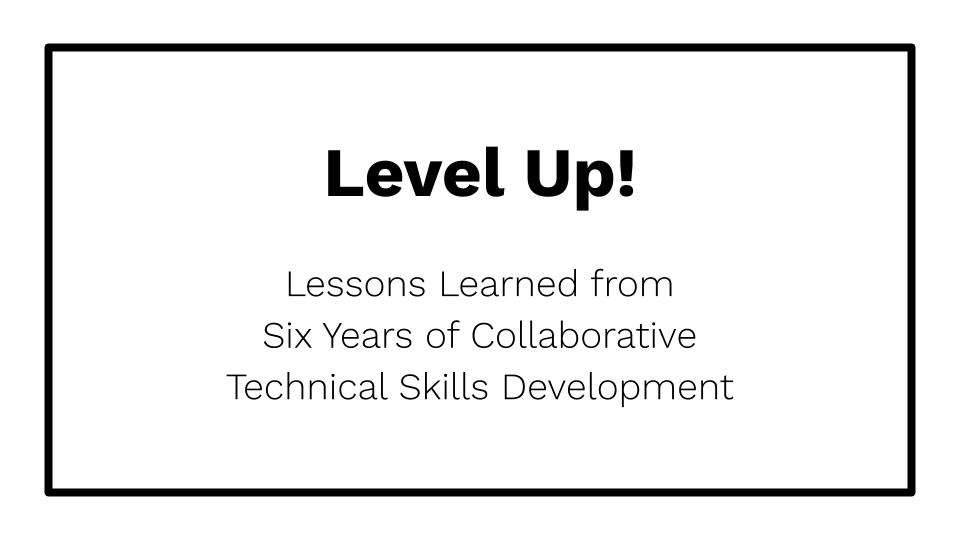
Thank you for joining us today. We are excited to discuss lessons learned from six years of collaborative technical skills development at the Bentley Historical Library.
Institutional Context
A bit about institutional context…

Formally established by the Regents of the University of Michigan in 1935, the Bentley serves as both the official archives of the University of Michigan and a repository for organizational records and personal papers for entities from across the state.
We’ll be referring a lot in this presentation to the “Curation Team,” which has taken on various forms over the years and which all of us have been on or are part of. The Curation Team supports the Library’s mission by:
- appraising, arranging and describing archival collections regardless of format;
- digitizing them;
- conserving them;
- providing access to them; and
- providing archival storage and ongoing collections management for them.
As it pertains to technical skills, some of this also includes the management of archival systems and providing strategic vision for the development, maintenance, and integration of our technical ecosystem.
Overview of Initiatives
We would now like to briefly introduce the four collaborative technical upskilling initiatives undertaken by the Bentley Historical Library.

First, the 2014-2016 ArchivesSpace-Archivematica-DSpace Workflow Integration Project was a grant funded initiative where participants were immersed in a variety of technical upskilling opportunities while they developed an end-to-end digital archives workflow.
Next, the 2015 Curation Team Workshops were an informal attempt to raise the general technical literacy of the broader Curation team.
After that, the Curation Team Technical Skills Pilot Project ran from 2017 to 2018 and represented a more formal and inclusive approach to peer-to-peer learning experiences.
And finally, the 2019 Bentley Audiovisual Quality Control Utility (or “BAroQUe”) Project incorporated group upskilling into a practical software development initiative.
While each initiative varied in terms of the total staff involvement, planning, and intended outcomes, all were collaborative group undertakings that provided opportunities to enhance the technical skills of staff and at the same time expanded the Bentley’s capacity to address core duties and responsibilities.
2019 Bentley Audiovisual Quality Control Utility Project

The 2019 BAroQUe Project arose from a demonstrated need–the archivist for A/V curation recognized that QC workflows for digitized sound recordings were inefficient and time consuming–and in the process of producing code to automate aspects of these procedures, archivists, technicians, and student workers were introduced to new approaches to project planning and management as well as new development tools like Git and GitHub.
So, for example…

The preliminary scope and desired outcomes for the project were established using a basic impact-effort matrix, a decision-making tool used to prioritize projects and manage time more efficiently.
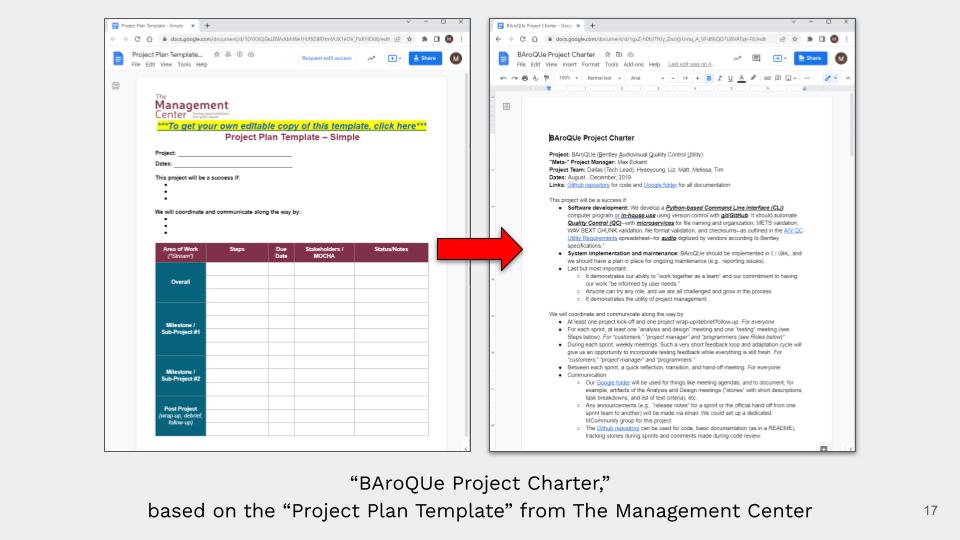
Participants also learned about project chartering, specifically using this template from The Management Center, which resulted in the development of criteria to measure the project’s success, a communication strategy, a timeline for important project milestones, and designation of roles and responsibilities.
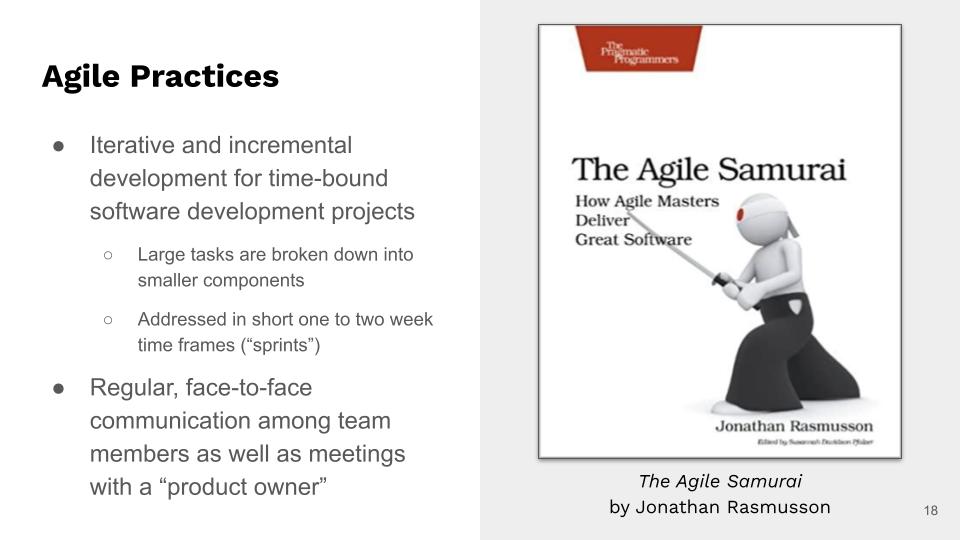
Finally, they all also learned about Agile software development methodology as outlined in Jonathan Rasmusson’s The Agile Samurai. This methodology emphasizes iterative and incremental development for time-bound software development projects, so that large tasks are broken down into smaller components that are addressed in short one to two week time frames, often referred to as “sprints.” A key feature of agile project management is regular, face-to-face communication among team members to identify challenges and share ideas as well as meetings with a “product owner” (in this case, the archivist for A/V curation), who provides feedback and suggestions as the work progresses.
Once the project began in earnest, key learning opportunities included:
- Introducing the entire project team to Git and GitHub during a preliminary sprint so that they could make contributions to our GitHub repository.
- Demonstrating the importance of iterative and incremental development and the agile execution of project plans in response to changing needs and new feedback: For example, rather than duplicate the functionality of existing tools for file format validation (one of BAroQUe’s functional requirements), the team decided to implement the tool, MediaConch, and, even though it wasn’t what they’d originally planned, revised an upcoming work cycle devoted to file format validation so that it focused on bug fixes and general improvements.
- While the project was ultimately focused on developing a Python utility, team members discovered that everyone–regardless of technical ability–had a part to play. While the most advanced Python developer on the team would serve as technical lead, other participants were able to contribute in a variety of ways, which included some basic Python coding, user testing, feedback on product features, and the creation of documentation.
- Dedicating time during the project to think about how the team would maintain it. This was something that would later become very important once the tool was implemented into A/V workflows.
Things to Consider When Exploring Technical Upskilling Projects
Over the course of the technical upskilling initiatives, the Curation team faced a number of challenges, which included…
- making the case and achieving buy-in for new efforts;
- working within time and resource constraints;
- striving for inclusive experiences; and
- building a culture that values technical upskilling.
This portion of the presentation thus highlights some key considerations to consider when exploring technical upskilling projects.
Making the Case for Initiatives
On first consideration, it may seem that improving the technical skills of a team only presents upsides for the organization as a whole as well as individual participants. However, there are a variety of reasons why managers as well as team members may hesitate to move forward, in which case it may be necessary to make a case for why a technical skills initiative should be undertaken.
Questions around the time required for initiatives and the overall tangibility of benefits may be foremost in the concerns of administration. In seeking buy-in, then, initiatives and intended outcomes should be framed by an awareness of organizational culture, structure, and values. Throughout these initiatives, then, the Curation team sought administrative support by connecting efforts with one of the library’s core strategic goals: to create more product with less process–at least when it makes sense–by employing efficient workflows through technical innovation.
To attract and sustain staff participation in technical upskilling initiatives, alignment with individuals’ varied motivations for acquiring new skills and knowledge is important. Gaining some knowledge of potential participants’ interests, professional goals, and current or prospective projects may thus yield important data for creating such alignment.
At the same time, in the absence of clearly defined benefits (either personal or work-related), there may be little incentive to invest time and energy to delve into new material that may prove to be both confusing and frustrating. In those cases, connecting the acquisition of technical skills to an urgent work need or longstanding pain point may also demonstrate the value of an initiative to individuals.
</b>Helping staff take ownership of initiatives and defining expectations</b> also proved to be important steps to not only to gain buy-in, but also to maintain the involvement of participants and ensure that everyone stays on the same page.
Time and Resource Constraints
As with most undertakings in academic and cultural heritage institutions, all four of the Curation team’s technical skills development initiatives faced time and resource constraints, as participation took place in addition to existing duties and responsibilities. Gaining administrative support allowed organizers to block off periods of the work week, but even then it could be difficult to master–let alone grasp–complex topics in relatively brief periods of time.
While time and resource constraints are two of the most important factors to consider when undertaking a new project or initiative, they are not the only constraints. Others include:
- Scope: What is the scope of the project?
- Time: What is the timeline of the project?
- Budget or resources: What are the available human or financial resources to support the project?
- Quality: How important is the quality of the final product?
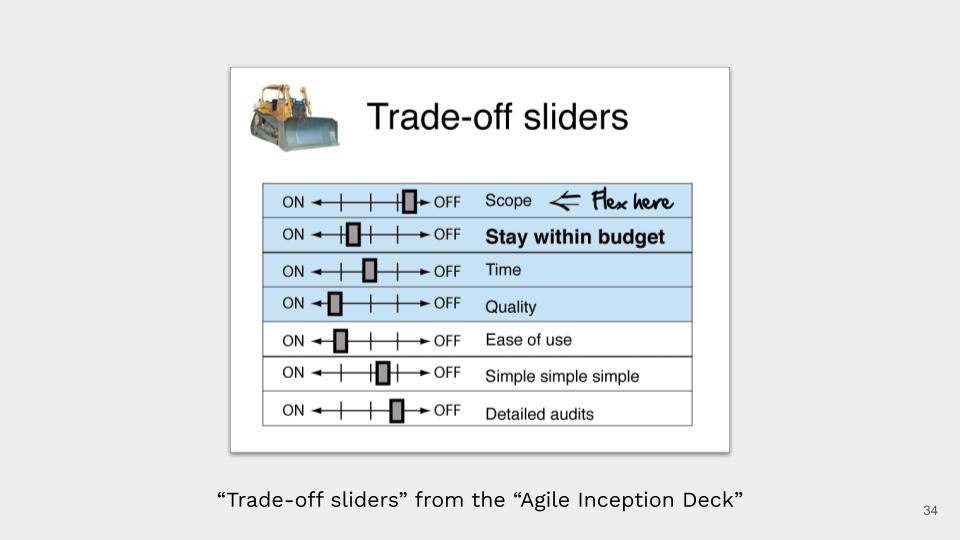
It can be helpful to think of these as “trade-offs” as in The Agile Samurai. When budget or other resources are high, or time is unlimited, the scope of the final product can be expansive and its quality can be high. If time is limited, however, scope and quality may need to be adjusted. In the majority of projects, at least one of these trade-offs will need to give, and it can be helpful for team members and other stakeholders to explicitly agree on which of these are flexible and which are not.
Time and resource constraints thus do not inherently prevent or sideline a project; they do, however, mean that the scope of the endeavor may not be as expansive as it might be if those time and resources constraints did not exist.
Approaches to Team Inclusivity and Equity
I’d like to start here by stating that here we are primarily talking here about inclusivity within the Curation Team of the Bentley Historical Library, at the University of Michigan. So we’re already starting from a privileged place and one with a lot of different legacies, for better and worse.
Over the six-year period encompassed by these initiatives, the Curation team faced a number of important and challenging questions around inclusivity: while the first initiative was centered around the 2014-2016 Workflow Integration Project team–which brought with it internal perceptions of a “club” that was exclusively for a select few, who, frankly, also just happened to be White men–organizers of later efforts deliberately sought to involve people who might otherwise have been excluded from these conversations, especially those without pre-existing “technical” skills or those who did not see the relevance of such skills in their day-to-day work.
These efforts at inclusivity led the Curation team to explore “multi-level” or “differentiated instruction” as an approach to learning technical skills, a method of essentially “tailoring instruction to meet individual needs” to better ensure that needs related to diverse abilities and interests could be met. In hindsight, it’s clear that we could have been better about this throughout the initiatives.
This inclusion brought with it further questions of equity. As a further caution in creating effective and meaningful participation models to promote group learning and technical upskilling, we’d also suggest that mandatory “inclusion” is not inherently good or desirable for every employee in every situation; nor should staff feel that lack of participation will negatively impact performance reviews, etc. While we, in general, take pride in the fact that these initiatives attempted to be intentionally inclusive, we also had to remember that our intentions do not equal impact and that there may be a very good reason why some would prefer not to participate in initiatives like these. Participation may not be preferable, for example, during times of professional change, such as the beginning of a new leadership role, or during personal change, such as balancing work and child care during a pandemic.
Some considerations are also organizational. For example, there are a number of different types of classification and status of employees at the Bentley besides “regular” archivists. These include folks like project archivists, paraprofessionals, student workers, or others, and all of the presenters, while archivists now at one point in time have been student workers, interns, or project archivists working at the Bentley or similar institutions… positions that each come with their own unique burden to bear. What we’ve learned from these initiatives, however, is that while folks like these shouldn’t necessarily be excluded from such initiatives, during the planning stages, their roles should be carefully negotiated to take into account factors like personal interests and goals as well as the structure within which the project team will be working. While, for example, the Technical Skills Pilot was run by volunteers and participants could choose their level of involvement, other initiatives like BAroQUe were made up of contributors that all reported to the same person. While this did help facilitate getting work done, this arrangement isn’t exactly “voluntary.”
All of which is to say that in our case, we learned that particular attention should be paid to factors like job classification, employee status (especially with students, interns, or volunteers), reporting structure, performance expectations, and compensation, especially as they relate to power dynamics within the organization. For example, while participation on initiatives like these may be a good learning experience for student workers, it should be balanced with the fact that they are often hired to do very narrowly scoped work, that they have a lower rate of pay, that there may be special regulations on the type and amount of work they can do, and that they are likely balancing their work with other competing priorities.
This has been a process, and it is of course very much a “work in progress.” We’re trying to make a nuanced point here that’s as much about equity as it is about inclusivity. It is not fair, for example, to ask a digitization technician or a student worker to perform the work of an archivist and not get compensated accordingly, regardless of their ability or aptitude, because, paternalistically, “it’s good for them.”
Building a Culture that Values Technical Upskilling
Finally, Liz, Mike, and I are archivists and some of us are middle managers. While inspired by the project and product management practices of our peers, none of us are experts in organizational culture or change. However, looking outside of the libraries and archives literature has provided some clues as to factors that contributed to both the success of the individual initiatives and, over time, how we attempted to build a culture that values technical upskilling.
Adam Grant, at the Wharton School, for example, has written about the types of discomfort that help and hinder collaborative initiatives in teams. Rather than trying to avoid conflict–Grant actually characterizes an absence of conflict as “apathy,” not “harmony”–conflict is, instead, “one of the ways that a team of people can be creative and make good decisions.” But not just any kind of conflict. On the one hand, “task conflict” is “a disagreement about the content of the discussion.” On the other hand, “relationship conflict” is “a perception of interpersonal difference between the people in the group.” Grant performed a study that involved groups working on collaborative tasks, the results of which suggest that…
“…failed groups tended to have much more relationship conflict, where they are busy disliking one another and not focusing on the work to be done. In contrast, high performing groups experienced more “on task” conflict, especially early on in their projects, and spend time working to better understand the ideas being presented.”
Most, if not all, of the Bentley’s initiatives encountered some degree of task conflict at the beginning of the initiative. All, however, lacked significant interpersonal conflict.
In terms of building a culture that values technical upskilling, it’s important that those who led the above initiatives sought to cultivate the kind of workplace culture they desired to implement, in part by simply defining it. Whether to create more product with less process by employing efficient workflows through technical innovation, or to “innovate and create new technologies” (which, along with “repairing, maintaining, and improving those technologies” is an explicit, written, and regularly reviewed value of the Curation team), these values gain traction because they map well to Bentley’s overall mission and yet are “special” to the Curation team. Camille Fournier reinforces this point: “Understand what your company’s values are, understand what your team’s values are… write the values down if they aren’t already written, and try to be explicit.”
It’s also significant that the impetus for technical upskilling was a “movement” spearheaded by individuals and middle managers rather than a top-down mandate from administration. While a leader such as a director or dean is often in a position of authority, according to Bryan Walker and Sarah A. Soule, they are not as effective as a “movement maker” in leading such a cultural movement. Rather than with a top-down mandate, all of the initiatives described above instead started with “a diffuse dissatisfaction with the status quo.” This brewing discontent turned into a “movement when a voice arises that provides a positive vision and a path forward that’s within the power of the crowd,” i.e., a path forward that inspired those on the Curation team and that ultimately did not need to be outsourced.
Conclusion
And that brings us to our conclusion. Perhaps the most important lesson learned from the Bentley Historical Library Curation team’s experience deals with the inherent limitations of what we described above, a project-based approach to technical skills development.

Organizational culture is more effective than project-based or individual efforts. Although the Curation team’s initiatives were roughly consecutive over the span of 2014 through 2019, each was a “project” of a set duration and concluded at an established end date; as a result, there was not necessarily comprehensive coverage or even continuity over those six years.
While we’ve tried to make a case for a kind of throughline between the initiatives, we also recognize a need to better establish a culture of innovation that fosters and, over the long haul, sustains group technical skill development.
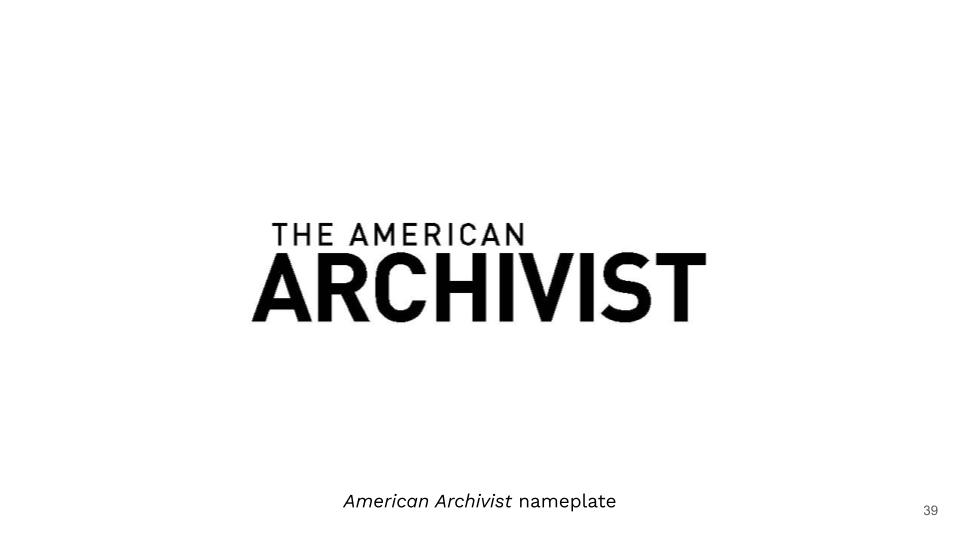
Finally, if you enjoyed this presentation, then you can also look out for our much more detailed discussion of these collaborative technical skills development initiatives in an American Archivist article currently slated to be published in Fall/Winter 2022.

Thank you, this has been a wonderful opportunity and we’re happy to take any questions you may have.
Categories: talks